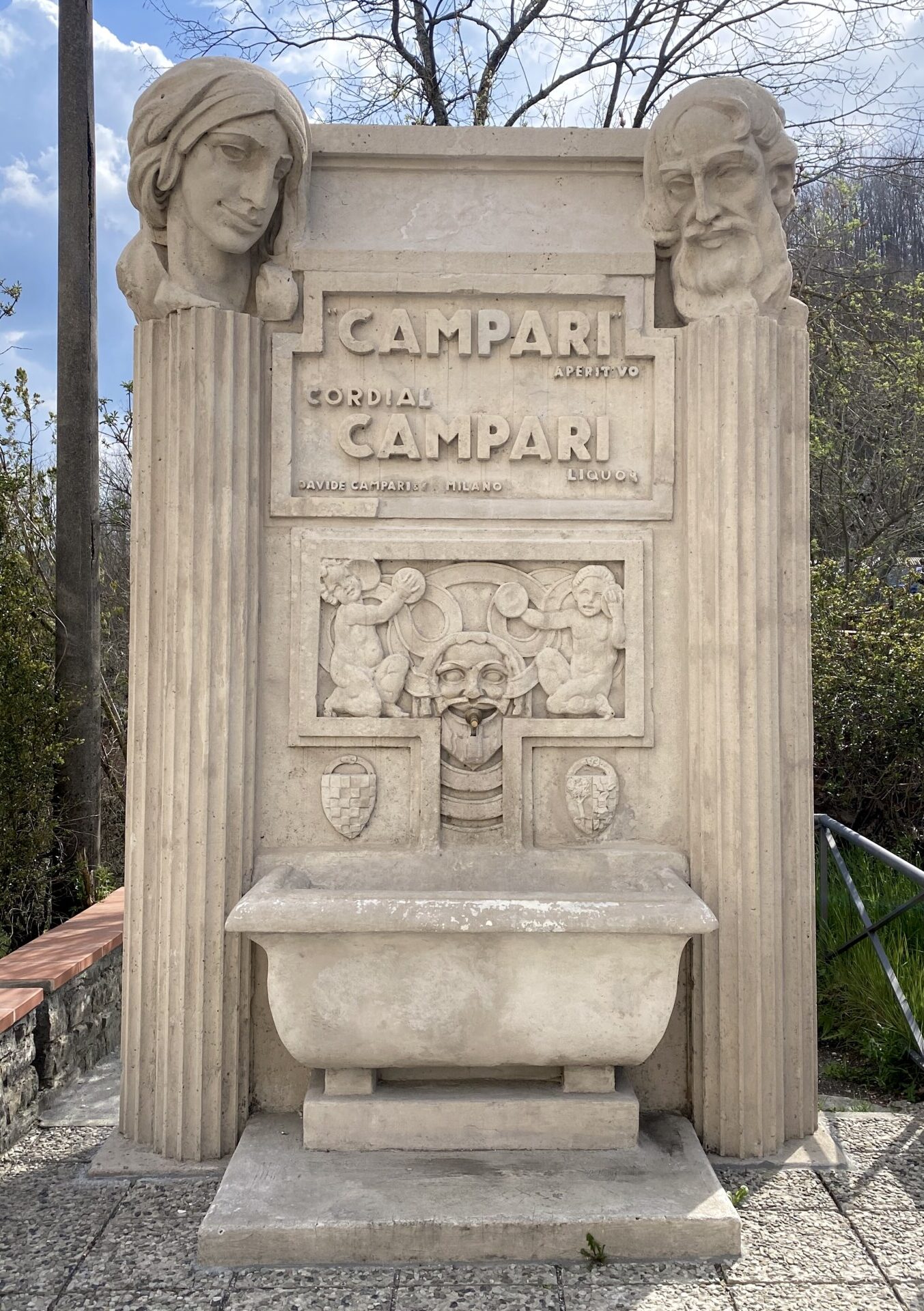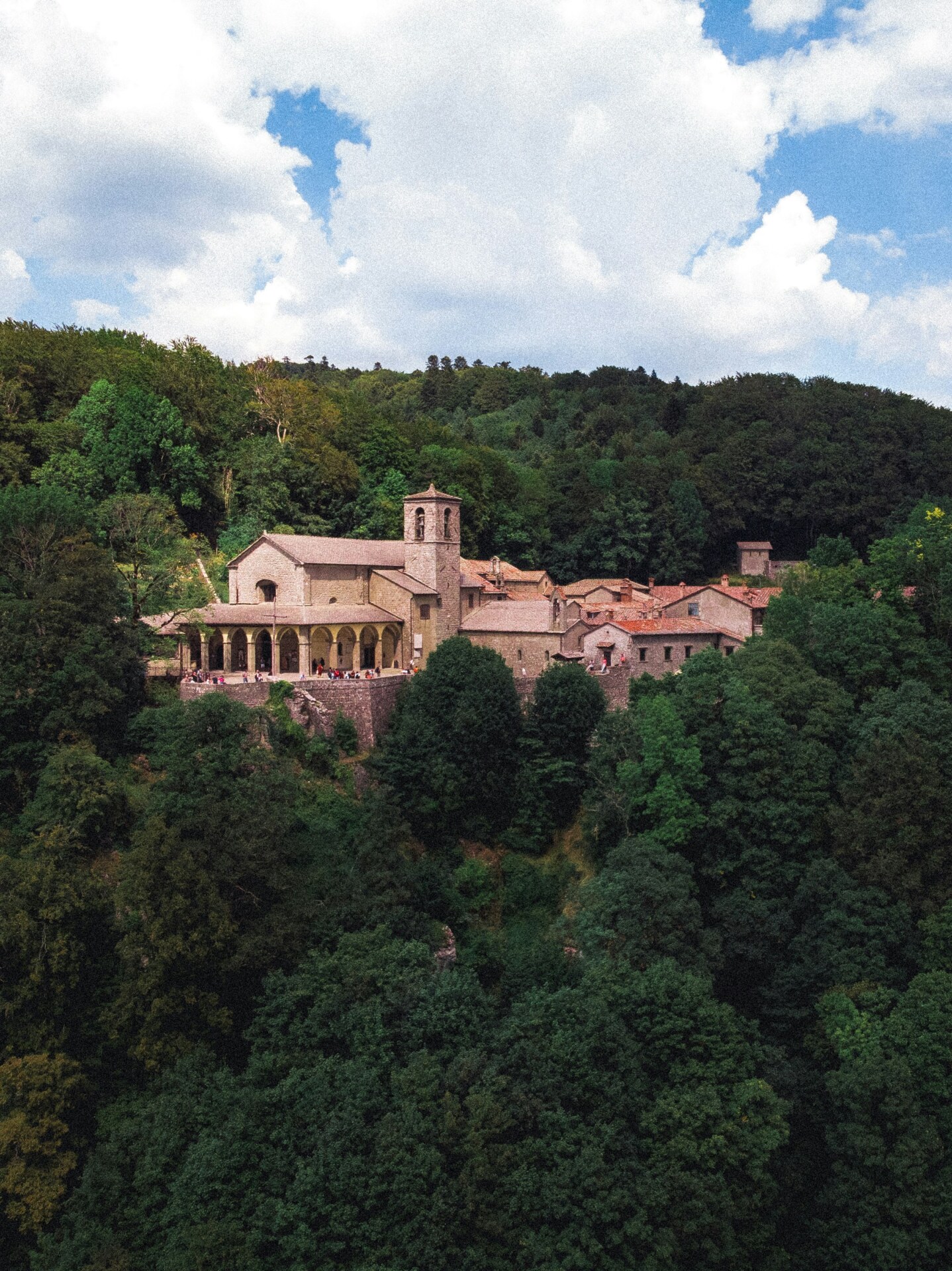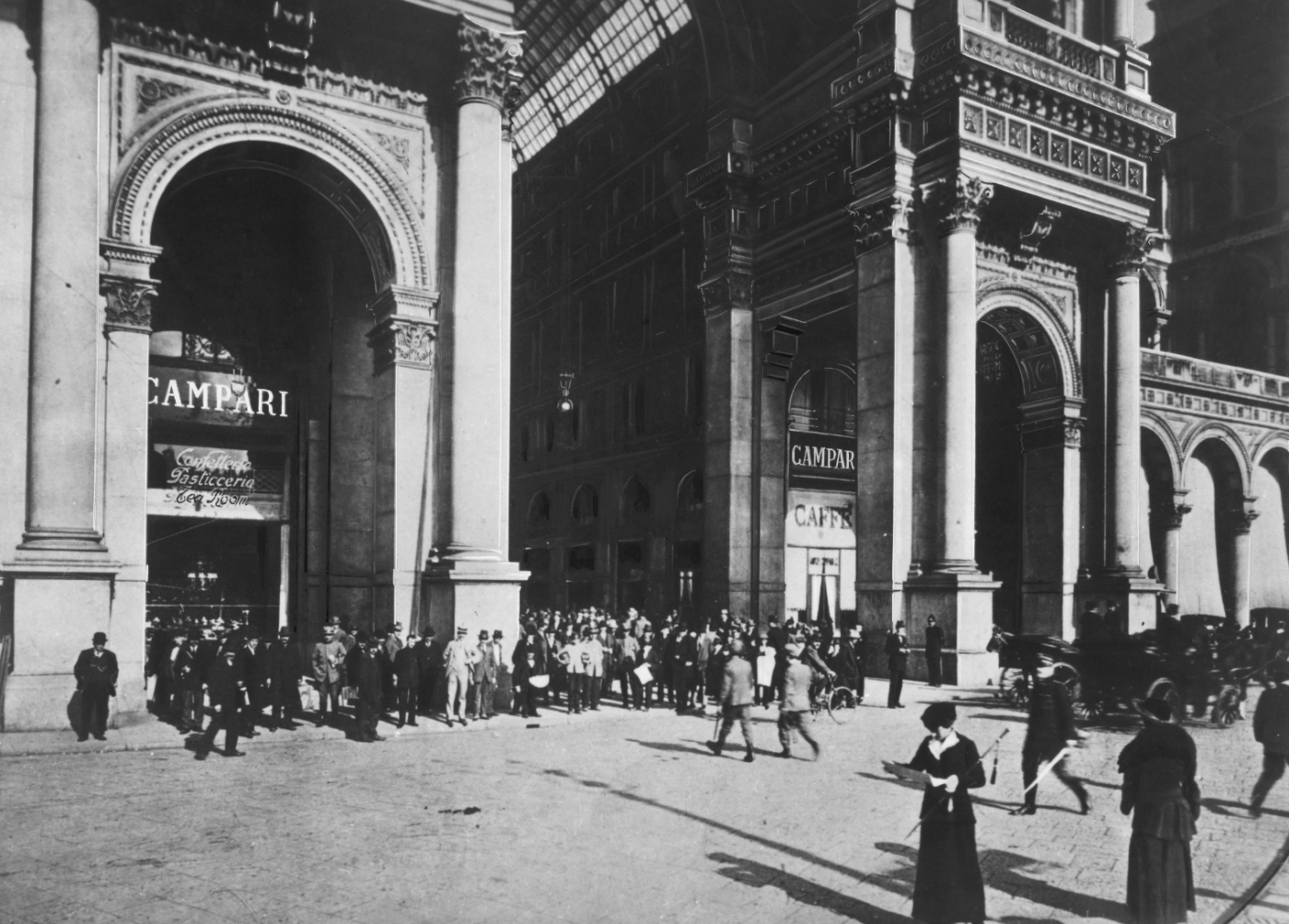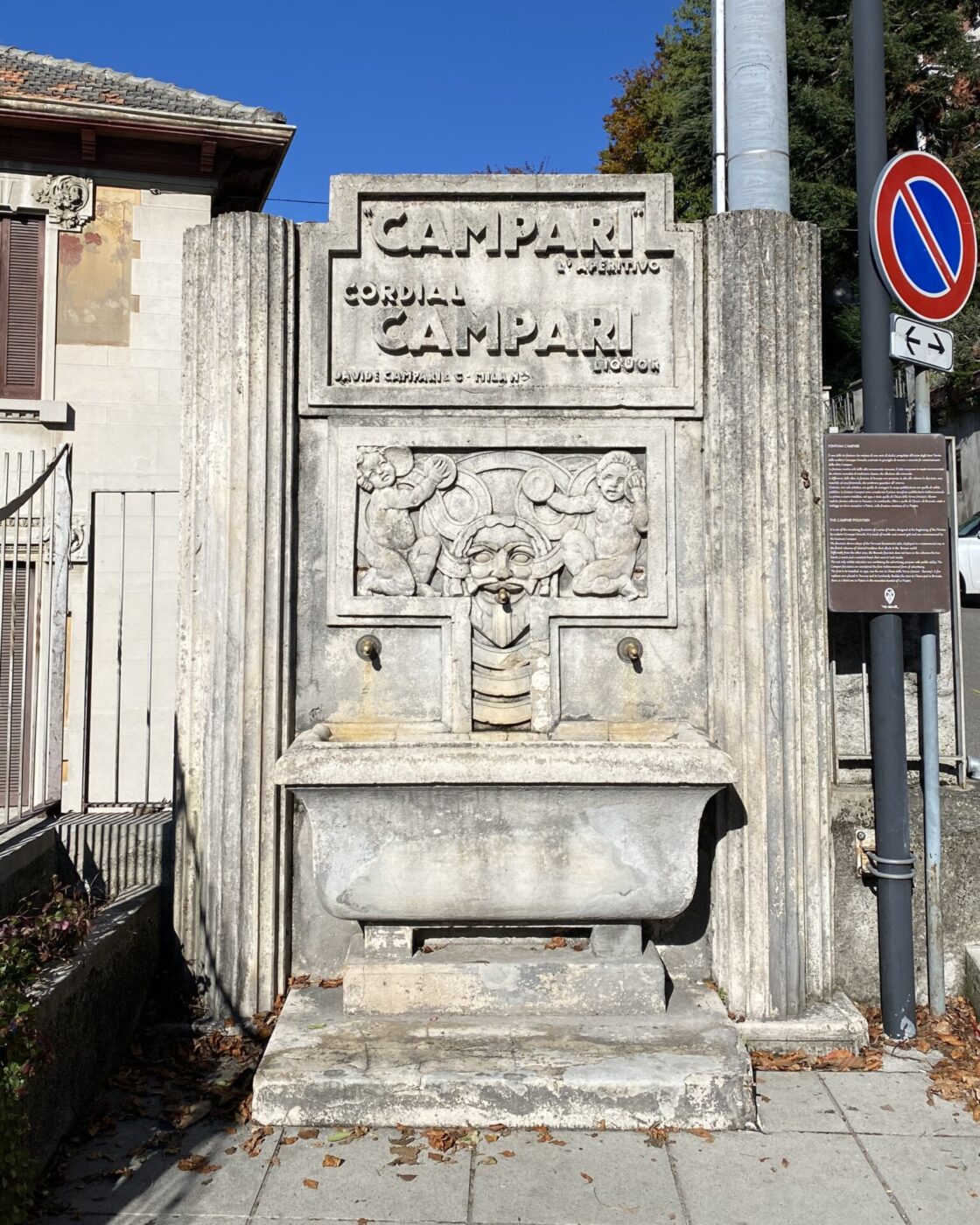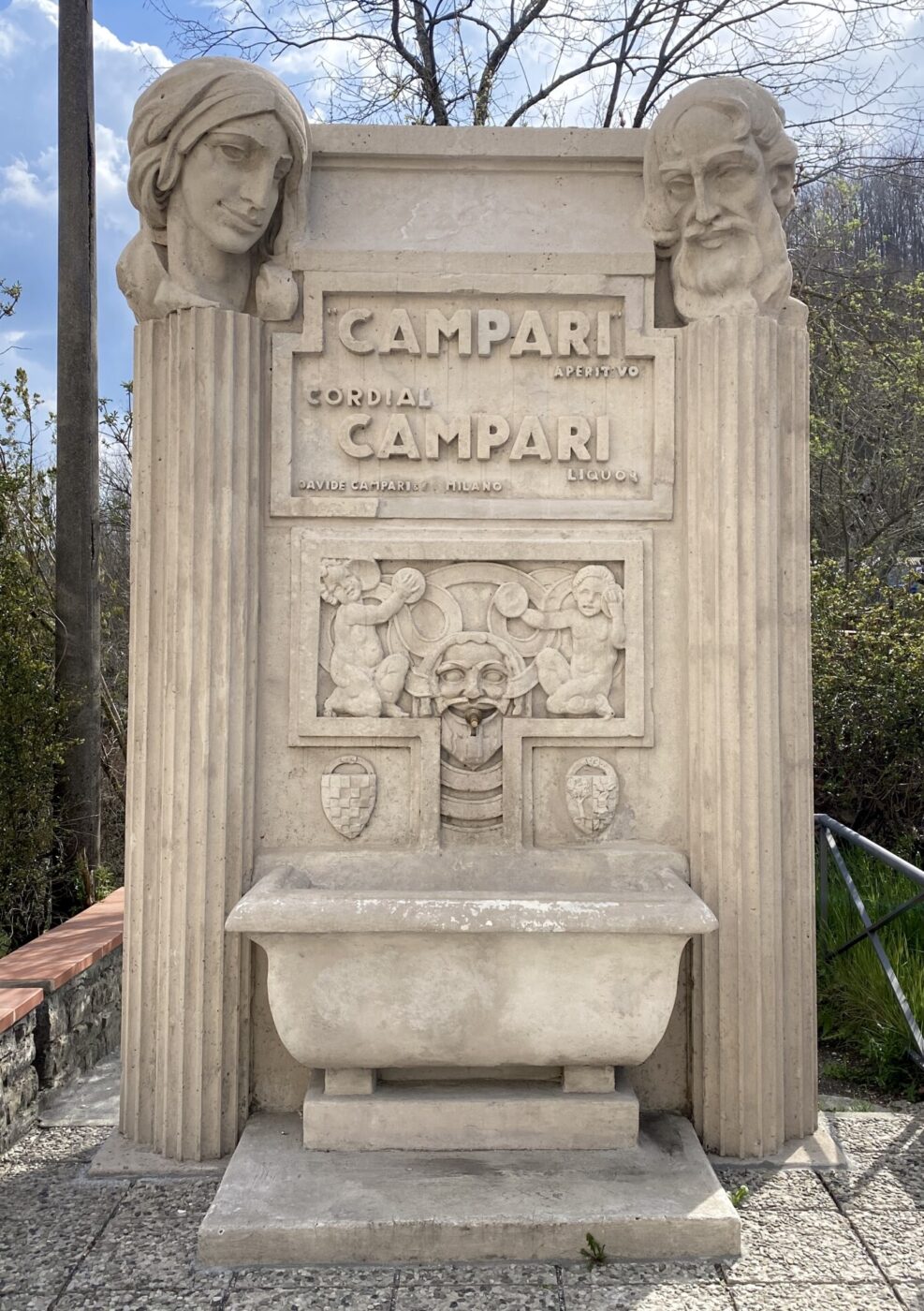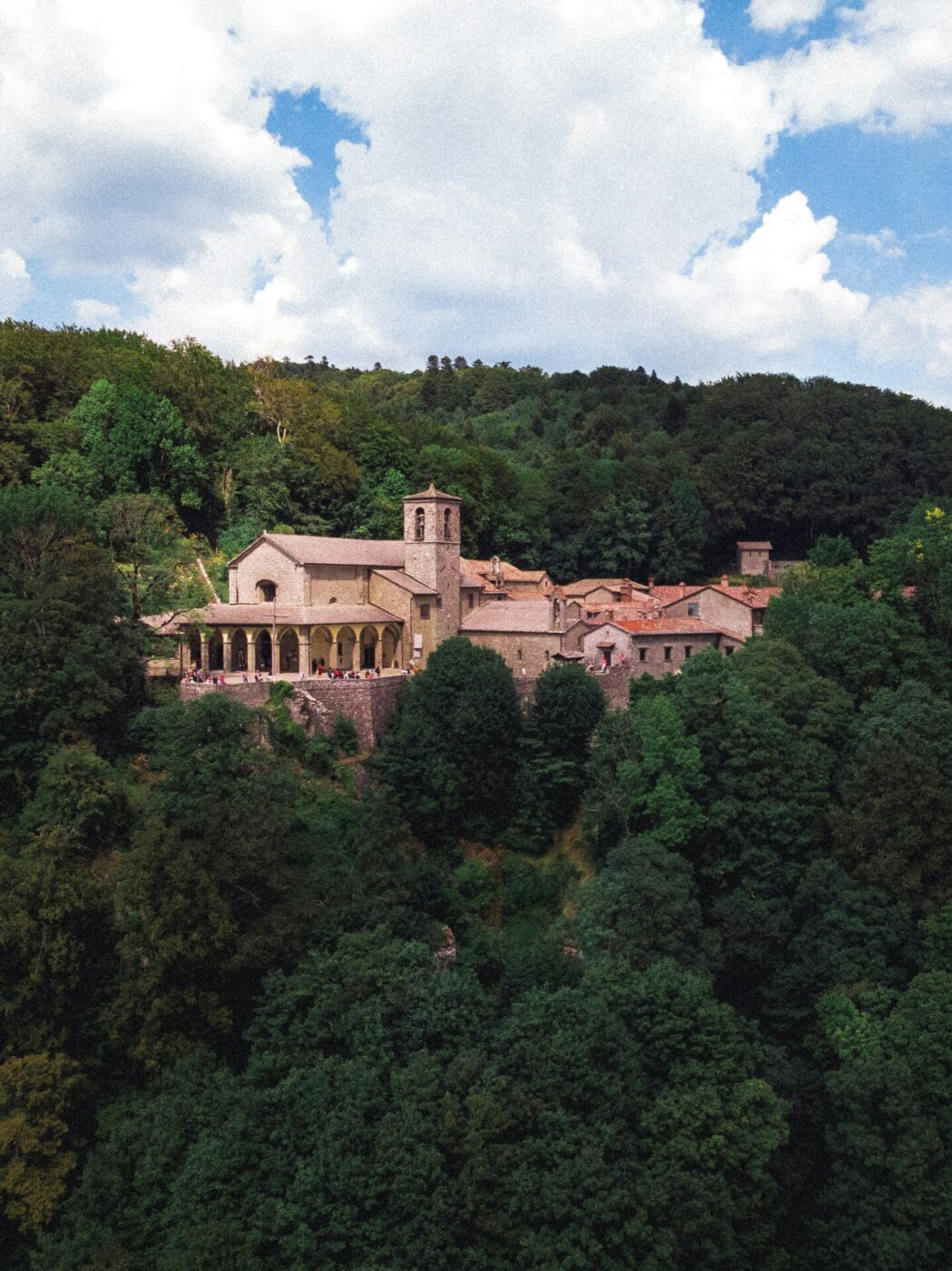Only three remain today, standing in stoic silence in mountainous regional towns of Chiusi della Verna, Le Piastre, and Brunate. Blink and you’d miss them, especially if you’re zipping through any of these less-visited locations en route to somewhere slightly more… “on the map.” After all, who on earth is looking out for a Campari fountain just there on the mountain roadside, unannounced, and largely un-Instagrammed?
There were once twelve marble and cement “Campari fountains” dotted across the regions of Lombardy and Tuscany; sculpted feats of monumental advertising inscribed with the brand name of Italy’s beloved red bitter aperitif–CAMPARI–loud and clear. You can’t even find them in Milan, Florence, or Turin if you look for them, because they weren’t built in any of the major cities. As the mystery of these fountains, their obscure locations, and their provenance increasingly stirred my curiosities, it seemed a designated “Campari fountain” road trip to each of the three remaining sites was necessary. All in the name of research, of course.
But why Campari? Why fountains? Why can nobody tell us what happened to the other nine (which were located in towns including Bormio, San Gimignano, and Taviano)? The mind is awash with questions about this epic advertising display turned heritage brand mystery. If there’s one place we could go for answers and insights, it’s Milan’s Galleria Campari museum and archive, surely. Alas, the story of these fountains even remained an enigma for Director of Galleria Campari at the time of our visit Paolo Cavallo, now retired, and Curator Anita Todesco.
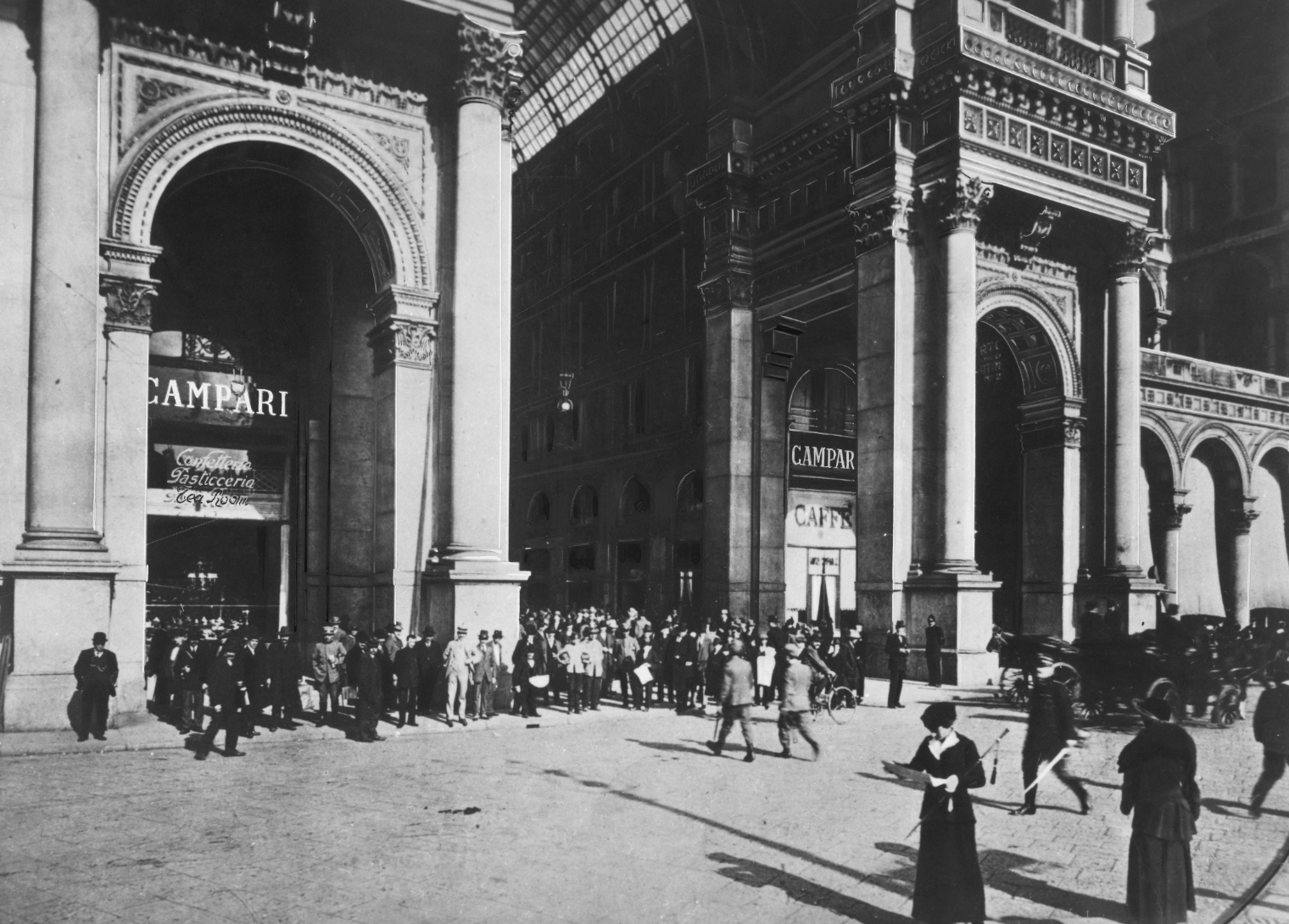
Milano Bar Campari, 1919-20; Archive Galleria Campari
“They are quite a mystery. Our archives have virtually no record of them, or why exactly they were built, and why most of them disappeared,” said Cavallo.
“They seem to have been a very local project, unique to each of these small towns and communities where they were built. While they may indicate that Campari wanted to promote its brand and products outside of the major cities, it’s strange from an advertising point of view because the company would have invested heavily in this kind of project, and yet, very few people would have seen these fountains given their regional locations,” he noted.
So we drove. We started in the tiny town of Chiusi della Verna in Arezzo (Tuscany), where the first of these twelve fountains is said to have been built in 1931. After asking around, we located the Fontana del Campari in Piazza dei Caduti. However, what we discovered was not merely a fountain, but a monument, a sculpture, and a mighty display of three-dimensional advertising all in one. In scale and scope, this whole fountain scheme does seem rather Campari, never one to cut corners when it comes to splashing out on artful advertising campaigns that are a snapshot of the social and cultural climate of their times. And yet, none of the company’s major art and design collaborators at the time (particularly Fortunato Depero) were involved in this fountain project that would have cost the company lots and lots of lira. Now that’s strange.
Observing each of them up close, and from all angles, the Campari fountains are truly a stylistic cocktail; a mix of design hallmarks from Classicism, Deco, Futurism, and Brutalism, with a splash of Viennese Secession in there too for good measure. Designed and created by Florentine sculptor Giuseppe Gronchi (1882-1944), who was commissioned to undertake the project by Davide Campari (son of the company’s founder Gaspare Campari), each fountain reflects a similar robust yet decorative design. They were no doubt stylistically influenced by the fascist-inspired Rationalism of the early 30s that dominated art and design aesthetics in Italy’s public realm.
A week later, we ventured just north of Florence to Le Piastre in the province of Pistoia. The fountain here on Via Modenese is almost identical to its twin in Chiusi della Verna. Two robust columns recalling architecture from Classical antiquity flank the monument on either side, crowned with the giant head of a woman on the left, and the head of a man on the right (neither of whom we recognise as factual or notable historical identities). Brunate’s fountain, however, is headless, for reasons unknown. Two plump cherubs in bas-relief seem to be having a jolly good time in the center section of the fountain, between which the face of a male mythical creature purses a bronze water tap between his lips. The CAMPARI name is proudly blocked out in heavy 1930s Futurism-style font, with various other words attached to it: L’APERITIVO, CORDIAL, and LIQUOR. The names DAVIDE CAMPARI & C. MILANO also make their mark on these fountains, just in case there is any doubt as to who has commissioned them.
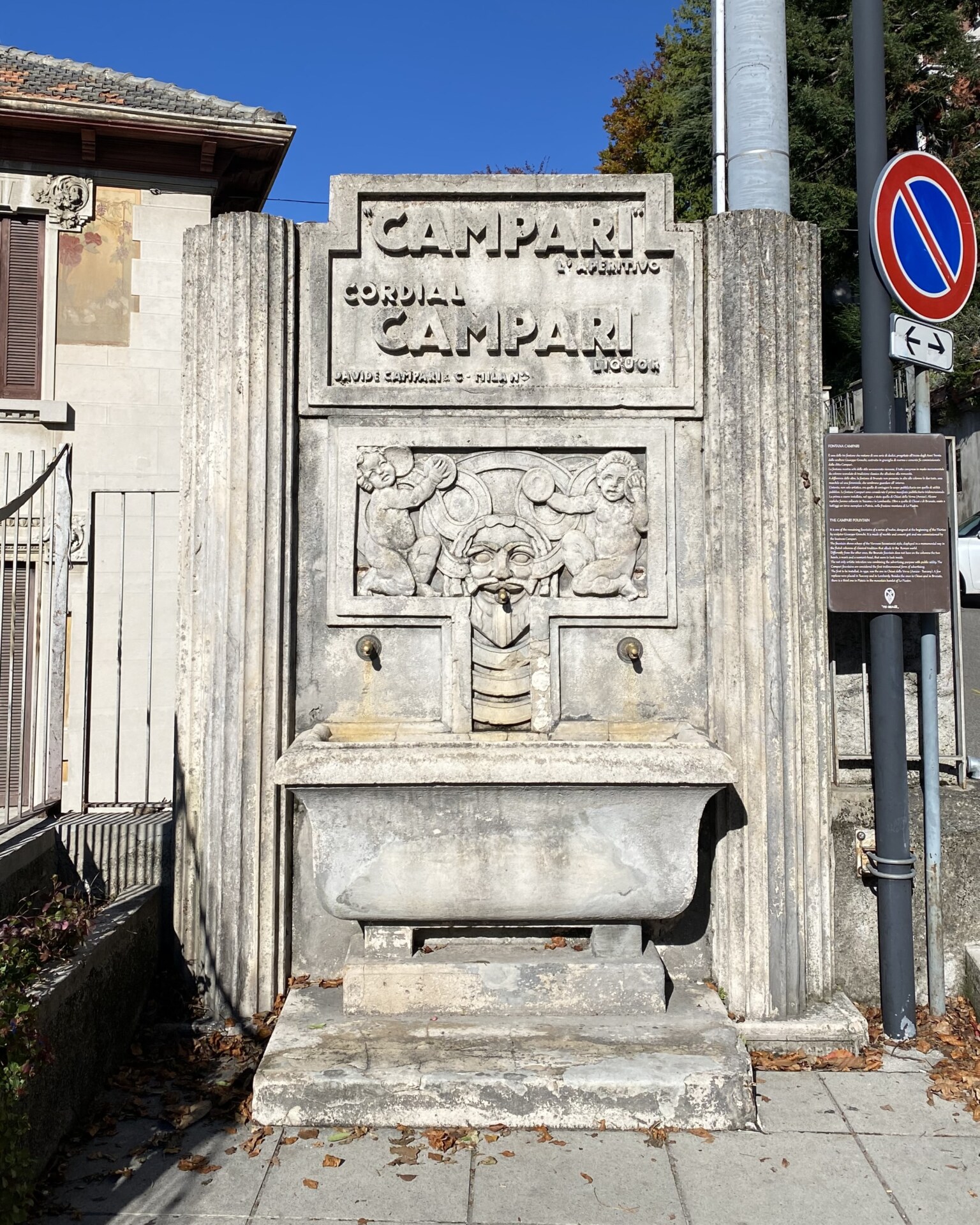
Brunate
“These fountains are the only project of their kind in Campari’s history in terms of materials, locations, and advertising scope. The brand’s advertising approach was, and is, always driven by two distinct ideas: the scope of the project, and its artistic vision. In the case of the fountains, we certainly see these two criteria, but we must also consider the public utility of these monuments,” reflected Todesco.
Beauty and functionality; beauty and public utility, even. According to Cavallo and Todesco, public utility surpassed advertising value in this fountain project, explaining that the Chiusi della Verna fountain in particular was built to coincide with the creation of a new aqueduct that brought water to the townspeople in the early 1930s. As the new water system was inaugurated for the city, so too was the Campari fountain. While we were somewhat dispirited to discover that red ribbons of Campari did not stream out of these fountains, we were delighted to watch local kids in Le Piastre press the knobs of its perfectly functioning bronze taps and spritz each other with crystal clear water, as they’ve probably been doing since the 30s. Art for art’s sake? Not in this case.
Further north we drove, up, up, and up to Como, and the funicular to Brunate after that, to track down the last of the three remaining Campari fountains. This darling little town was once a go-to summer holiday destination for a select group of Milanese at the turn of the century–fancy, stylish, booming–a wise choice of location by Campari, no doubt. Today, Brunate is perhaps more of a “tourist” spot than the other two remaining fountain sites, as travelers shoot up the mountain from Lake Como to snap some selfies with a bella vista. If they cared to walk a few extra steps from the funicular station along Via Roma, they’d be delighted to discover a Campari fountain they had no idea existed.
Tomaso Pessina, who grew up spending his summers at his family home in Brunate right near the fountain, considers the monument to be part of the landscape of his life. While it might appear a spectacle of sculpture, design, and advertising to passers-by, it has far more sentimental resonance for Pessina:
“The fountain is one of those things that was just always there. It was a spot to get a sip of water in the heat of a summer afternoon. It was a meeting place–‘Wait for me at the Campari!’ It was where I met my girlfriend out of my parent’s sight. Now, it’s where I park my motorbike,” he shares.
“I just remember I really liked to touch it, I liked the feeling of its harsh material. It was a sculpture I could easily interact with, a life-size, three-dimensional advertisement. It was like a toy,” Pessina continues. The fountain’s Deco style even takes Pessina back to stories of his mother’s childhood, when Brunate was the place to be in the summers of a bygone era that was visually characterized by an intoxicating mix of “bella vita” and various stylistic “isms”–Rationalism and Brutalism to name a few, much like the fountain itself.
Bittersweet discoveries, that’s what these remaining Campari fountains are. Once monuments, milestones, and meeting spots that united people in regional towns via a grand splash of worldly advertising and artistic intrigue, they stand today as silent witnesses of time. While they may be hidden, forgotten, and gradually disappearing, they still charm the odd passer-by who dares to venture off the beaten track.
